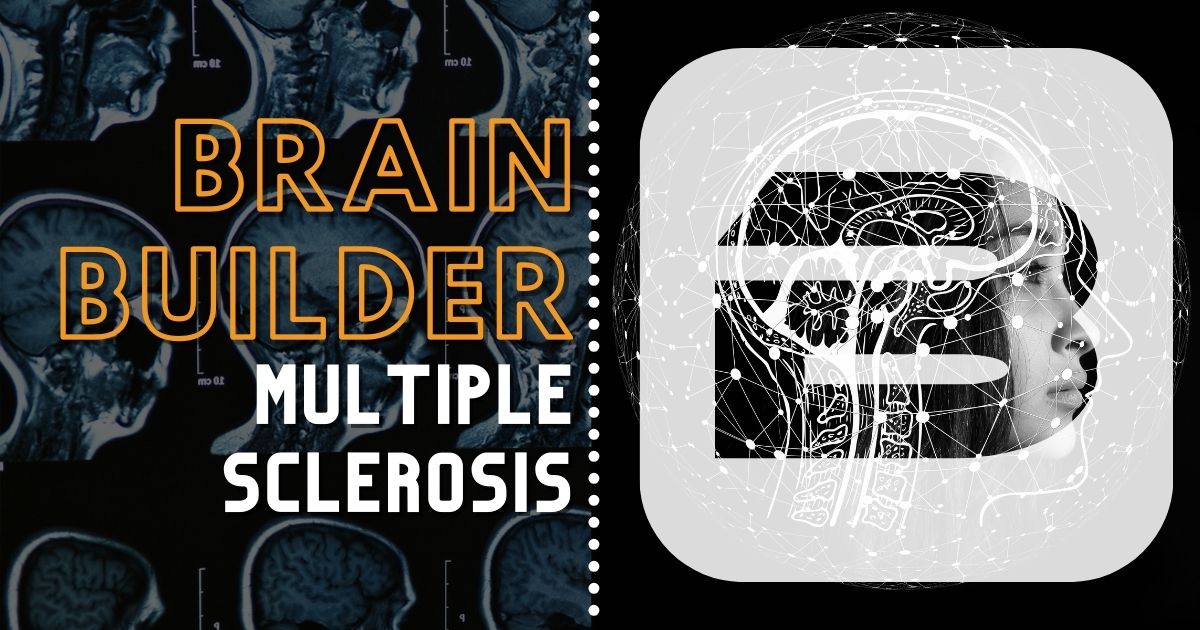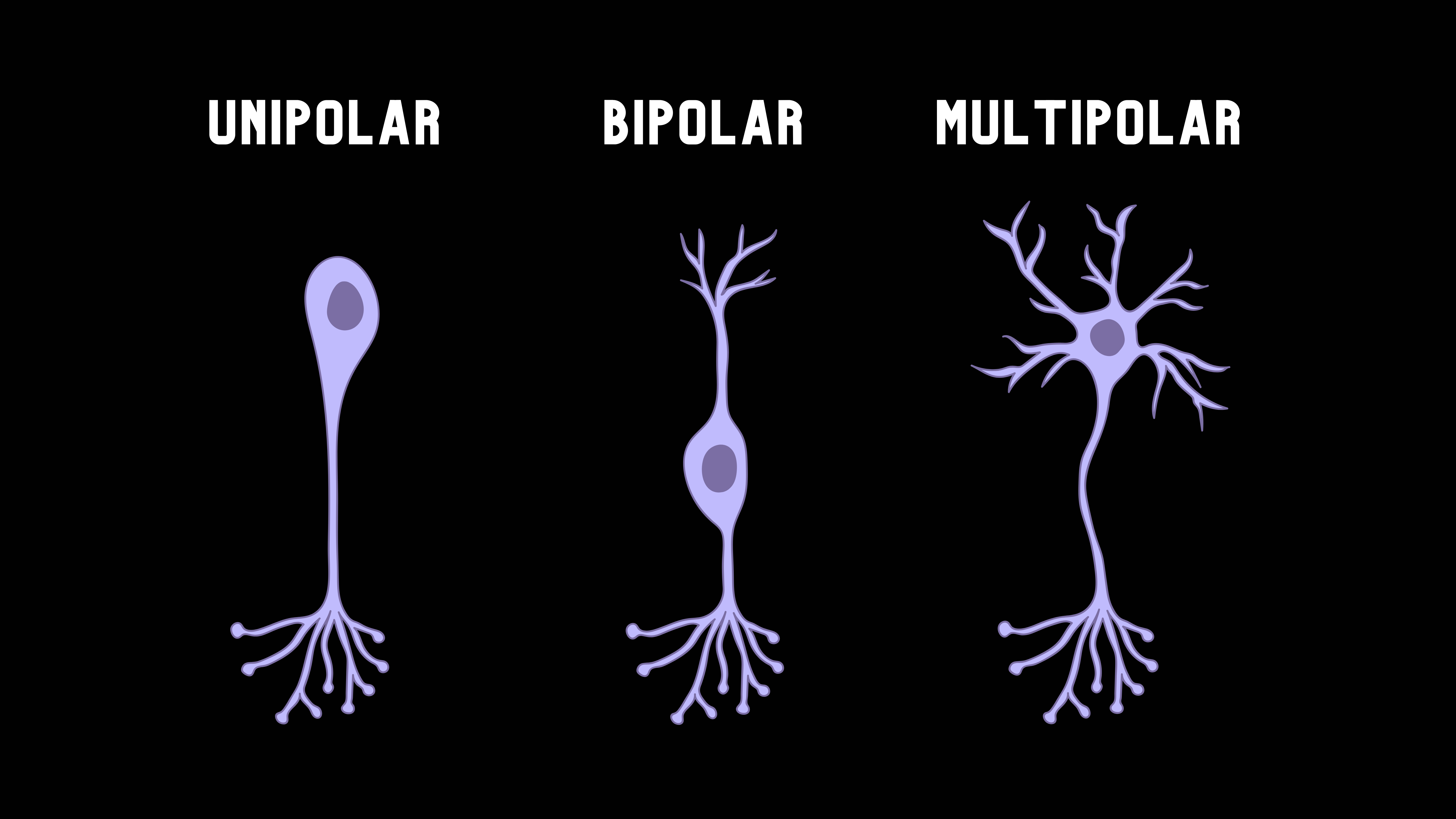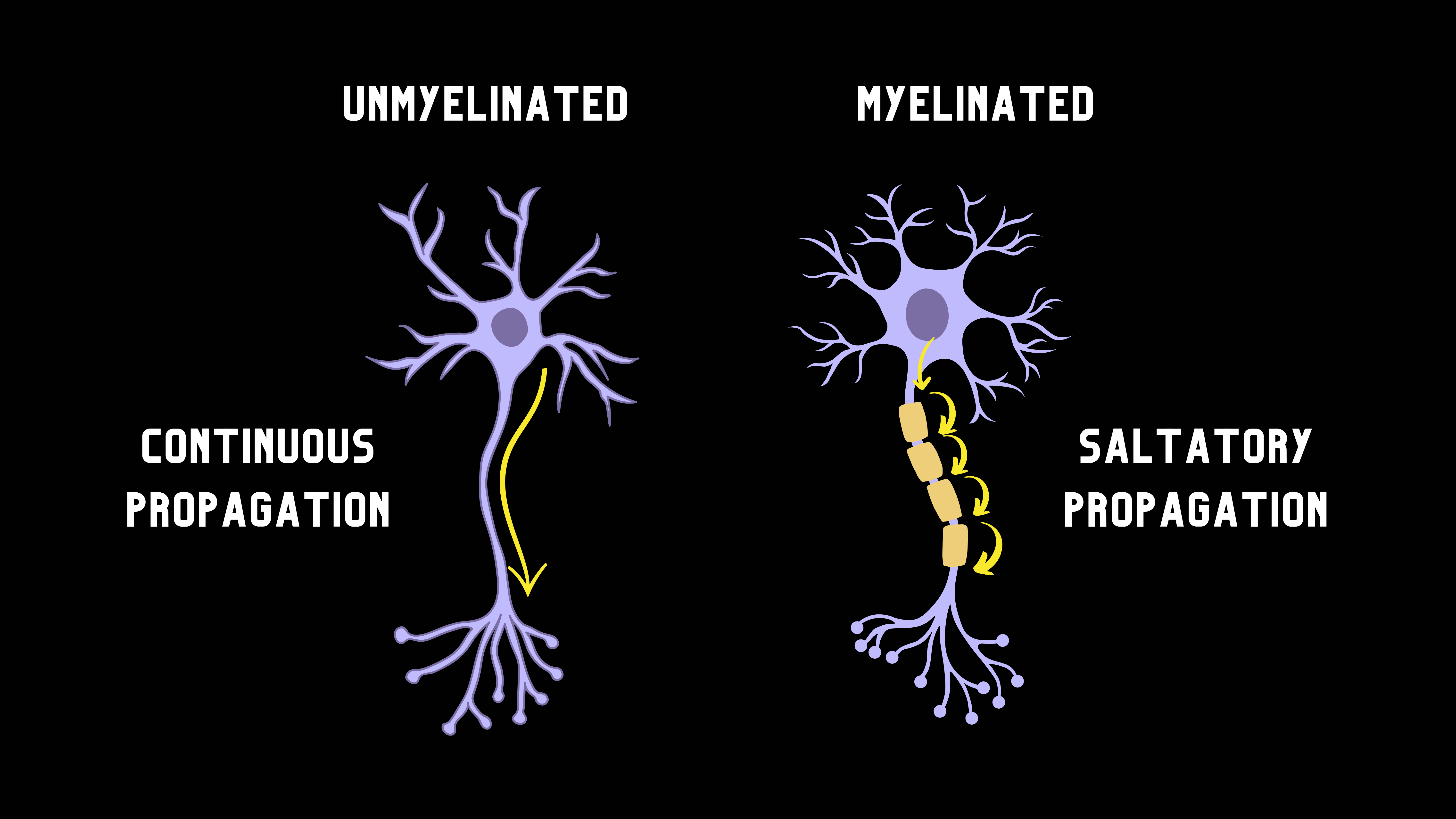The Brain and Multiple Sclerosis
by Amy Bohan, MS | February 24, 2025

Case study video explaining the brain and multiple sclerosis with a patient example!
Use the button below to schedule a demo to learn about our quizzes, flash cards, and other anatomy resources that support this Brain Builder!
Schedule a Demo
Multiple Sclerosis, or MS, is an unpredictable autoimmune disease with a variety of symptoms. In this Brain Builder, we will take a closer look at the PNS, CNS, nervous tissue, and the symptoms, causes, and treatments of MS. Multiple sclerosis can affect each patient differently, which can make diagnosing difficult. As with most diseases, early detection is key, especially in mitigating the damage of this degenerative disease.
Introduction to MS
Multiple sclerosis (MS) is an autoimmune disease. The antibodies produced by lymphocytes (a type of white blood cell) cause inflammation and the destruction of the myelin in the Central Nervous System (CNS). The central nervous system consists of the brain and the spinal cord, while the Peripheral Nervous system consists of 12 cranial nerves and 31 spinal nerves. MS is a disease characterized by recurrent incidents of demyelination that affect axons in the CNS. Symptoms include partial loss of vision and speech, balance, and general motor coordination, including bowel and bladder control. (Betts et al., 2022). About 1/3 of all cases are progressive.
Autoimmune Disease
An autoimmune disease occurs when the immune system mistakenly attacks the body’s own tissues. In cases of MS, the result of this mistaken attack results in damage to the myelin in the CNS, which causes a wide range of symptoms. Patients who have MS may have varying degrees of symptoms, but anything from walking to eating, and even talking, can be deemed a challenge.
Types of MS
In addition, there are different types of MS.
Clinically Isolated Syndrome (CIS): In clinically isolated syndrome (CIS), the patient is typically experiencing their first episode. Normally, CIS will progress to MS, depending on the presence and/or amount of brain lesions.
Primary MS (PPMS): In Primary Multiple Sclerosis, symptoms progress, but there is no period of remission.
Relapsing-Remitting MS (RRMS): In Relapsing-Remittent Multiple Sclerosis, which is the most common, there will be identifiable lesions on the brain. However, every person may experience different symptoms and different episodes, depending on the location of the lesions in the CNS.
Secondary Progressive MS (SPMS): The third type of MS is known as Active Secondary Progressive Multiple Sclerosis. If no more lesions develop, one could go into remission. However, if more lesions develop or if symptoms progress, one would be said to be in Progressive Active Multiple Sclerosis. (Betts et al,. 2022).
Progressive Active MS
Neurons
There are three different types of neurons. The least common is the unipolar neuron, which only has one process (both the axon and the dendrite) extending from the cell body. It is sometimes found when dealing with senses, such as temperature. The bipolar neuron has two processes extending from either side of the cell body. This type is often related to vision and found in the retina. The most common type of neuron is the multipolar neuron. It has multiple dendrites, one cell body, and one long axon.

You can think of a neuron like how you think of your hand and arm. In this example, the dendrites of a multipolar neuron would be similar to the fingers (multiple, short, and close to the hand). The dendrites are important, because they deal with information input, and feed that information to the cell body. The cell body is similar to the palm of the hand. It deals with information processing and integration. The cell body will then send that information down the long axon, which is similar to the arm. The axon of a neuron is primarily responsible for information output. (Betts et al., 2022). In multipolar neurons, which are the most common, there is one axon per neuron. The axon can be myelinated or unmyelinated. If the axon has myelin, this neuron can use what is known as saltatory propagation, where the nerve impulse essentially leapfrogs over the myelin and lands in the nodes of Ranvier. This method of propagation is preferred over continuous propagation, which is the route of transmission for unmyelinated axons.
Myelin
Myelin is a lipid-rich sheath that acts as an insulator to the axon. This insulation is also beneficial because it increases the impulse speed of the action potential. An action potential is when an impulse travels all the way down the axon and ends at the axon terminal, where the neurotransmitter is released by synaptic vesicles into a gap (which is called the synaptic cleft). After the neurotransmitter is exocytosed into the synaptic cleft, the receptors on the postsynaptic neuron will bind to the ligand, which will allow sodium ions to enter the neuron. The myelin sheath is imperative because it allows this impulse to travel much faster than if the myelin was not present. In fact, white matter in the brain and in the central nervous system is composed of the lipid sheath, and that is why it appears white. Whereas gray matter appears gray in color, because no myelin is present, due to gray matter being made up of cell bodies. (Betts et al., 2022).

Unfortunately, in multiple sclerosis, the myelin, which is the insulated sheath covering the axon (think bubble wrap) has been degraded (think popping the bubble wrap). In Anatomy and Physiology, form is crucial to function, so once this occurs, the myelin cannot do its intended job. This ultimately is a progressive disease, which leads to a slower impulse speed down the axon, and into the synaptic cleft (which is the gap between neurons, or between a neuron and effector). (Betts et al., 2022).
Neuroglia
Neuroglia are essentially helper cells within the nervous system. In the CNS, notable glial cells include the astrocytes, which help with ion concentration and the Blood Brain Barrier; microglia, which help with phagocytosis in the brain; ependymal cells, which regulate the CSF; and oligodendrocytes, which function to make myelin. In the PNS, the most notable glial cells are Schwann cells, which make the myelin to insulate the peripheral nerves; and satellite cells, which help regulate ion concentration.
The main neuroglia that are associated with making the myelin is known as the oligodendrocytes, in the central nervous system. However, the peripheral nervous system (PNS) can also have myelin present in its axons. The neuroglia (think helper cells) in the PNS that are responsible for making the myelin are called the Schwann cells. (Betts et al., 2022). Should this occur, this can lead to a disease called Guillain-Barre syndrome. Luckily, in most cases, this does get better with time, unlike multiple sclerosis.
Diagnosis
In summary, multiple sclerosis is an autoimmune disease and can affect people differently. Early detection is key and can be diagnosed with an MRI to look for lesions in the brain. Images of the retina, taken by an ophthalmologist, can also aid in early detection.
Symptoms
Another early symptom of MS that oftentimes tends to be overlooked is swelling of the optic nerve, resulting in bulging of the optic disc. It is critical to seek medical attention if one has blurry vision, chronic migraines, balance disturbances, or loss of coordination, as these symptoms may indicate a swollen optic nerve. Other signs of MS include vision disturbances, such as blurred vision, nystagmus, and even double vision. In addition, slurred speech and digestive upsets could be early indications that MS is present.
Treatments
Treatments depend on the severity and the progression of the disease. Antiinflammatories, steroids, immunosuppressants, and even chemotherapy have proven to be effective in at least stabilizing the disease.
Key Terms
Autoimmune disease - a condition where the immune system attacks and destroys healthy body cells
Degenerative disease - an incurable condition that causes gradual deterioration of cells, tissues, or organs, resulting in permanent damage and loss of function over time
Clinically Isolated Syndrome (CIS) - diagnosed when the patient experiences their first episode and normally progresses to MS
Primary Multiple Sclerosis - the first type of MS that can be diagnosed, in which symptoms progress without a period of remission
Relapsing-Remitting MS (RRMS) - the most common type of MS, in which lesions develop and symptoms occur in “episodes,” with brief periods of remission in between
Secondary Progressive MS (SPMS) - the type of MS that can be diagnosed after a period of remission if more lesions develop or symptoms continue to progress steadily
Multipolar neuron - the most common type of neuron, which has multiple dendrites, one cell body, and one long axon
Myelin - a lipid-rich substance that insulates the axon of some neurons
Saltatory propagation - the manner by which a nerve impulse jumps between the Nodes of Ranvier on a myelinated axon, traveling faster than on an unmyelinated axon
Oligodendrocytes - the neuroglia (helper cells) that make myelin in the central nervous system
Schwann cells - the neuroglia (helper cells) that make myelin in the peripheral nervous system
Schedule a demo today to learn how you can incorporate BodyViz into your classes and give your students the opportunity to practice using the information from this Brain Builder on real patients with authentic 3D dissection!
Schedule a Demo
Helpful Links: